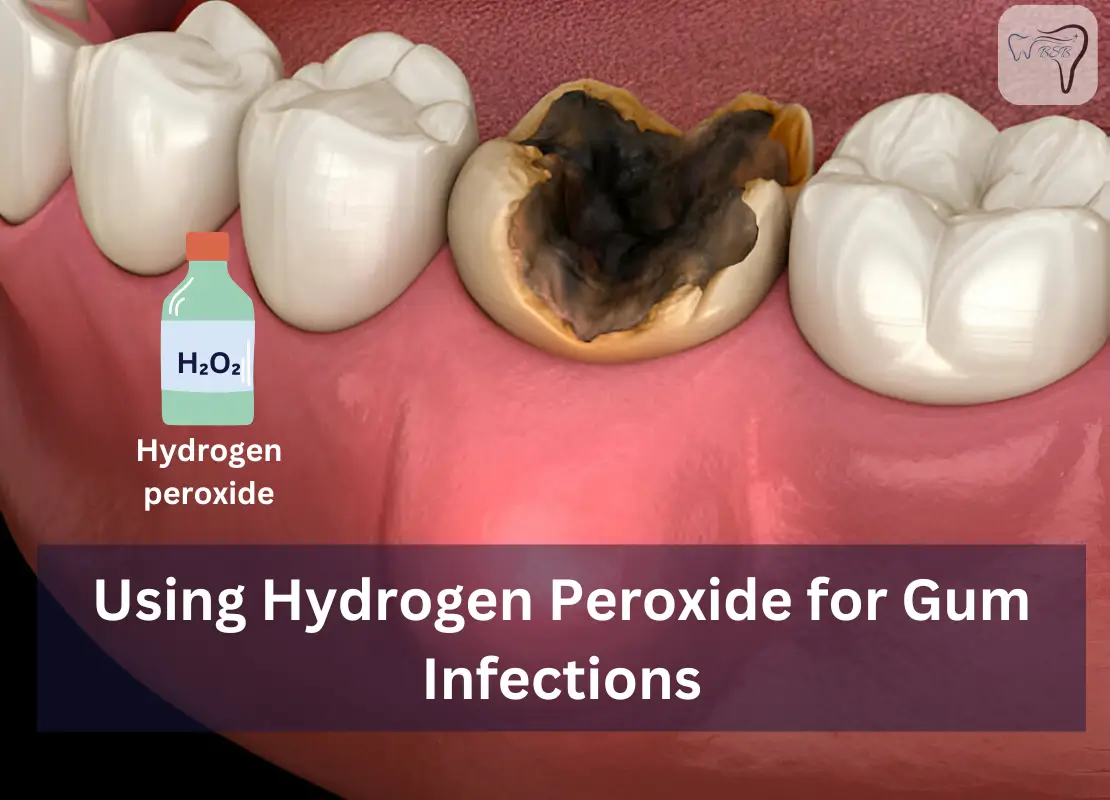Having spent years in dental practice, I’ve seen countless patients discover the remarkable versatility of hydrogen peroxide in their dental care journey. This common medicine cabinet staple, known from basic chemistry class, serves as a powerful antibacterial and antiseptic solution for various oral health concerns.
When used as a prophylactic rinse in diluted forms, it becomes an effective infection-fighting agent against harmful bacteria, particularly for those struggling with tooth infection and gum disease. While many know it for hair color lightening or cleaning surfaces, its natural remedies applications extend far beyond, promoting a healthy mouth through its oral health benefits.
Through proper oral process management, patients often achieve that coveted bright smile and improved teeth whitening results, making it a cornerstone in modern dental treatment protocols.
Using Hydrogen Peroxide for Gum Infections
How to Use Hydrogen Peroxide for Gum Infection
Throughout my 15 years in dentistry, I’ve recommended a specific protocol for treating tooth infections and abscesses using hydrogen peroxide’s powerful antibacterial properties. Visit your local pharmacy to purchase a 3% concentrated solution in a brown bottle – avoid food-grade H202 as it poses serious risks when used internally or externally.
As both a disinfectant and antiseptic, it effectively combats mouth infections caused by bacteria, viruses, fungi, and other harmful microorganisms. For optimal healing, mix the solution with water, then swish thoroughly around the affected areas for 30 seconds. Remember to spit and rinse afterward. Repeat this process 2-3 times daily until the infection subsides.
What is Hydrogen Peroxide?
In my dental research, H2O2 – a chemical compound of hydrogen atoms and oxygen atoms, exists as a colorless, odorless, viscous liquid mixed with water. This disinfectant creates a bubbling reaction through oxidation, releasing oxygen and foaming to remove dead skin.
While treating cuts, burns, scrapes on skin, it works as a mouthwash for gingivitis, canker sores, cold sores, and aids with respiratory conditions like asthma, bronchitis, and sinus infection via inhalation. Though this peroxide isn’t suitable for deep wounds, animal bites, or excess mucus, it excels at bleaching textiles, cleaning surfaces, and promoting teeth whitening for healthier teeth.
How to Use Hydrogen Peroxide for Gum Infection Treatment
As a dental specialist tracking treatments since the 1900s, I’ve seen how H202, a colorless concentrated liquid, revolutionized gum disease treatment. Since 1913, dentists and RDH professionals have used this solution to combat bacteria along the gum line and remove stubborn plaque.
Poor oral hygiene can lead to gingivitis, progressing to periodontitis and eventual tooth loss if untreated. This first-aid approach releases oxygen that destroys anaerobic bacteria and their cell walls, particularly in deep periodontal pockets.
For home treatment, mix one tablespoon of 3% solution with water to create a diluted solution. Gargle and swish for 2 minutes, then spit and rinse. For persistent pain or swollen gums showing inflammation or gum irritation, repeat every 2 hours or 1-2 times daily until you achieve a healthier smile.
Precautions for Using Hydrogen Peroxide on Gum Infection
Here are some of the necessary precautions to take:
- When using a 3% antiseptic solution for mouth rinse, it’s crucial to dilute it with water to avoid potential irritation and discomfort. Always be cautious when handling this colorless liquid to ensure safe and effective use.
- Before using hydrogen peroxide on your gum area, perform a patch test to check for any adverse reactions or sensitivity. If you experience irritation or discomfort, discontinue use immediately.
- While performing a mouthwash or gum disease treatment, make sure to avoid swallowing the solution. Doing so can lead to gastrointestinal tract irritation and other unwanted side effects. Use it sparingly and limit use to once or twice daily.
- To maintain good oral hygiene, be gentle when swishing the solution around your mouth. Swishing too vigorously or gargling too forcefully may cause harm to your tooth enamel and other sensitive parts of the mouth.
- For a bright smile and healthy gums, incorporate hydrogen peroxide as a preventative measure for plaque removal and to reverse the earliest signs of gum disease. Complement it with a soft-bristled toothbrush and a regular flossing routine.
Consulting with a dentist is essential when using this potent oxidizing agent for oral care, as it guarantees proper application and safety. Although the colorless liquid can efficiently support oral hygiene, it is important to use it carefully and under the supervision of a professional to avoid potential risks.
Is Hydrogen Peroxide Safe?
As a dental professional, I can affirm that while H202 in over-the-counter oral care products is generally safe, avoid homemade solutions. Concentrated solutions of this oxidizing agent require proper concentration monitoring. Using mouthguards improperly can cause gum irritation, tooth sensitivity, especially with recessed gums.
For tooth whitening and gum treatment, follow manufacturer’s instructions strictly – don’t store in your medicine cabinet without dentist approval. Never swallow or ingest a stronger concentration. Always check the manufacturer’s label on any product for achieving healthier gums and a whiter, confident smile.
Benefits of Hydrogen Peroxide for Gum Infection
Here are some of the benefits of colorless oxidizing agents in dental care:
- Colorless oxidizing agents prevent plaque vs tartar build-up.
- They protect gum health by reducing inflammation.
- Help in teeth whitening for a brighter smile.
- Kill harmful bacteria, preventing decay.
- Aid in healing damaged tissues.
Hydrogen Peroxide: A Powerful Solution for Teeth Whitening
In my 15 years of cosmetic dentistry, I’ve seen remarkable transformations using hydrogen peroxide as a versatile whitening product. While traditional toothpaste with cleaning silica only tackles surface stains, professionally recommended treatments at a dentist’s office offer deeper cleansing.
For those seeking at-home application, mixing baking soda with 3% hydrogen peroxide creates a paste-like consistency that’s gentler than a bleaching product.When using this do-it-yourself methods, apply with a toothbrush, using light pressure, then rinse with water.
As an over-the-counter solution for oral care, it effectively fights discoloration that discolor your tooth, though some patients report sensitivity. The key lies in the proper concentration – strong enough to remove stains without causing damage to the enamel. This method has consistently proven effective across various levels of teeth whitening needs.
Safely Brushing Teeth With Hydrogen Peroxide
Through years of dental practice, I’ve refined the basics of brushing teeth with hydrogen peroxide to maximize its benefits while ensuring safety. The secret lies in proper oral care routine: mix baking soda with 3% solution to create a paste-like consistency for optimal plaque removal and bacteria elimination.
Apply this mixture using a toothbrush, brushing gently for two minutes without excessive pressure to prevent damages to your tooth enamel. I always emphasize to my patients that while this method promotes teeth whitening and hygiene, overuse can lead to sensitivity. After brushing, thoroughly rinse your mouth with water.
This approach has consistently helped my patients maintain excellent oral health, and in some cases, even help when badly decayed tooth be saved.
Conclusion
In conclusion, hydrogen peroxide is an effective and accessible solution for treating gum infections due to its antibacterial and antiseptic properties. Diluting it properly and using it as a mouthwash can help reduce bacteria and promote healing. However, it should be used with caution and in moderation to avoid irritation or damage to the gums.

